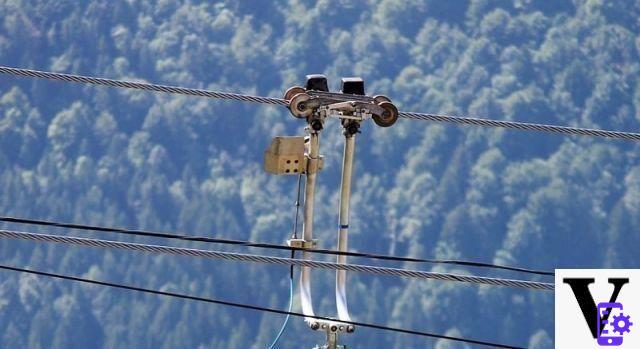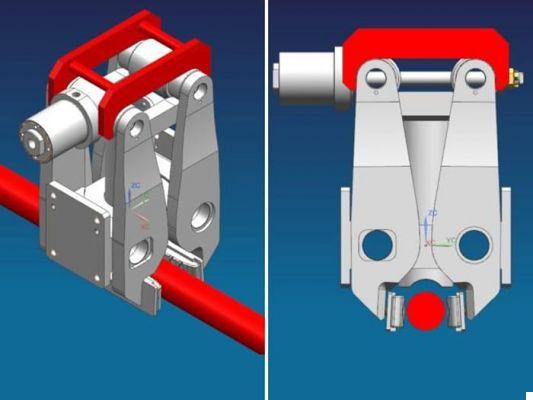La funivia it is a type of cable transport that is more than a hundred years old. Almost all of us climbed into a cabin to overcome a great difference in height, effortlessly climbing a mountain ridge. And we probably haven't wondered how it works. But in light of the terrible tragedy that occurred on the Stresa-Mottarone cable car, in which fourteen people lost their lives, interest on how a cable car works (and what can go wrong) arises spontaneously. So let's try to understand it together, in a simple way and avoiding technicalities.
Cable car: how does it work?
The concept behind rope hauling is older than written history: pulleys and similar craftsmen have been helping men overcome gradients since the dawn of time. But the first cable car open to the public for the transport of people arrives in 1907, built in San Sebastian to overcome Monte Ulia in the Basque territories. The first cable car inaugurated on the Italian territory opens the following year, in Bolzano (even if the city becomes part of the Kingdom of Italy only in 1919).
In the years the details have changed but not the principle. For operation they are provided two main cables, That load-bearing and that pulling. To these more recently is added that of relief, which is used to reach the cabin in an emergency (such as a sudden block). The two cables have two different functions, which justify the difference in diameter:
- La carrying rope it's a cable that remains fixed and stationary. It is used to support and stabilize the movement of the car during ascent and descent. Firmly anchored at both stations, this steel rope stays anchored at the two stations upstream and downstream. There may also be two carrying ropes in a cable car, to ensure more stability even in strong winds and increase safety. The diameter reaches up to eight centimeters.
- La tow rope, also formed by steel strands (therefore more "wires" of steel intertwined in a spiral), has the task of towing the cabin. It usually has a "elongated ring“, When one side goes up the other goes down. However, there are also cable cars "to come and go“, Which can slide in both directions by reversing the tow. Its diameter varies between two and five centimeters.
Some gondola lifts, chairlifts and ski lifts have one single rope that acts as both a carrying cable and a hauler. In this case, the maximum capacity is usually around ten passengers for the gondola lifts. When there is only one cable, the structure is usually a ring to allow the ascent and descent of the vehicles.

Fixed or automatic vice
The cabs or seats are attached to the carrier rope with fixed vice permanently, especially in the smaller ski lifts, chairlifts and gondola lifts. Lifts that carry more people have a automatic clamping, technology that arrived in the 80s. This technology allows vehicles to be clamped to the ropes at stations with ease, making users climb into the stationary cab without the need to stop the plant.
The vice prevents the cabin from detaching from the rope. To make it slide on the supporting rope are then the rulliere, "wheels" that reduce friction and allow the cable car to go up, pulled by the hauling cable.
How to check the integrity of the ropes of a cable car
The steel strand structure not only guarantees the greatest possible resistance, but also allows you to easily check the integrity of the ropes. Although steel is not a good conductor of electricity, it nevertheless conducts it by creating a magnetic field. Experts then carry out a inductive magnetic control. If one of the steel wires that make up the rope is cut or there is a defect inside, there will be one reduction of the electromagnetic field in the test. There is therefore no need to see the broken wires: a technician can obtain this data thanks to physics.
When they are intact, the cables can hold up up to three or four times the maximum cab weight. The cabins used on the Stresa-Mottarone can carry up to 35-40 people maximum (during the tragedy the capacity was reduced by more than half due to Covid restrictions). Cables can also withstand important tensions, in the case, for example, that the machinery that moves the towing rope stops upstream but continues to move downstream. However, there is always a limit: during the construction phase, the companies that build the plants carry out tests to understand how much margin for error there is. Again, they usually are overabundant in caution.
The emergency brake
Even in the event of a break in the towing rope as in the case of the accident on the Stresa-Mottarone, the plants have a emergency brake to prevent the cabins from falling. There are on the rope two steel jaws, capable of exerting a much greater grip on the rope than the pull of gravity along the rope. The jaws clamp the rope automatically if there is a risk of falling.
However, there is an element designed to prevent this mechanism from activating when it is not needed, called "fork". It is a sheet of metal weighing about five kilos that hooks onto the top of the jaws for prevent them from tripping to fasten the rope. The fork comes used only when the cabin is empty, to carry out trial tests of the cars.

What could have gone wrong on the Stresa-Mottarone cable car?
In the case of the Stresa-Mottarone, a fork inserted in one of the two brakes present on the cable car. At the moment investigations are ascertaining whether the other fork was also inserted but jumped during the fall. This element is what a possible human error: the forks were not removed after the tests, which prevented the brakes from releasing once the hauling rope was broken. However, it remains too early to jump to conclusions: we must leave time for the investigators to reconstruct the whole affair.
READ ALSO: Accident on Lake Maggiore: a cable car comes off
The other element to explain is the hauling rope that has broken. Some experts in recent days have hypothesized in the newspaper a possible hitch in which the wheels of the cable car have severed the rope, others hypothesize a wear along the rope. To date, however, these are only hypotheses.
The plant had undergone a general inspection in August 2016, with an annual rope inspection every November. According to the manufacturing company Leitner (which will act as a civil party in the next trial) the last magnetic particle inspection to check the integrity of the steel wire rope took place in November 2020, without encountering critical issues. The South Tyrolean company is in charge of extraordinary and ordinary maintenance, while i daily and weekly checks are carried out by the Ferrovie del Mottarone company.
Discover the best offers of the day on the telegram channel of technologicfansIn any case, it will be necessary to follow the legal matter to understand what really happened. We hope this explanation helps to better understand the details of this terrible story.
OfferBestseller No. 1 realme 7 5G Smartphone, Display ultra fluido a 120Hz,...
realme 7 5G Smartphone, Display ultra fluido a 120Hz,...
- Chip with 5G connectivity: Dimensity 5G + 5G DSDS
- 30W fast charge: 0 to 100% in 65 minutes
- 5000mAh Super Battery: 5% battery, 28 hours of standby time


























